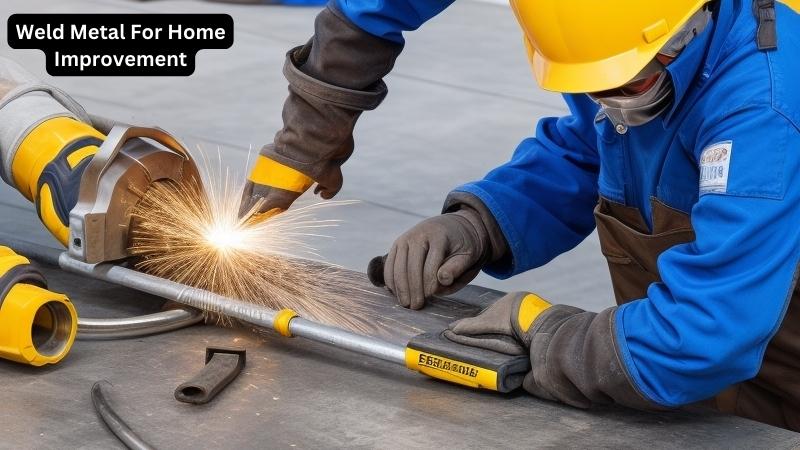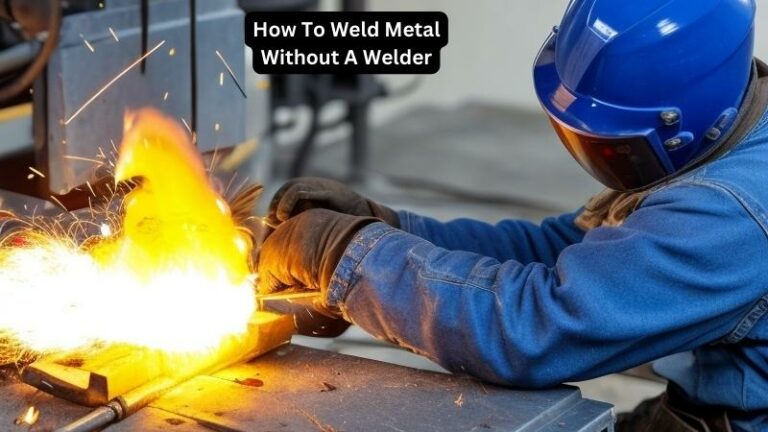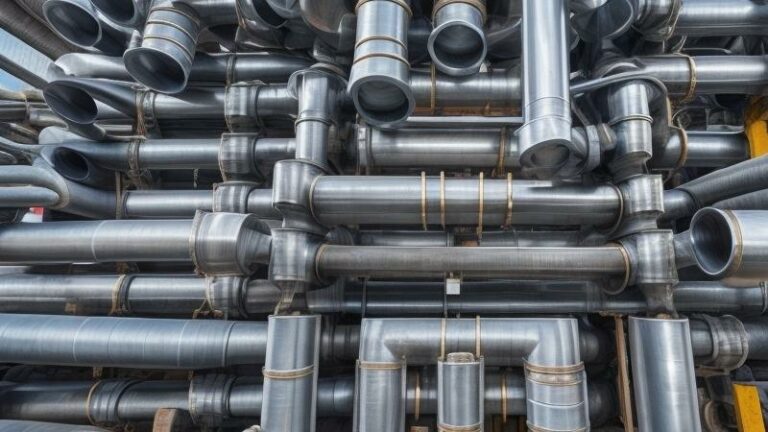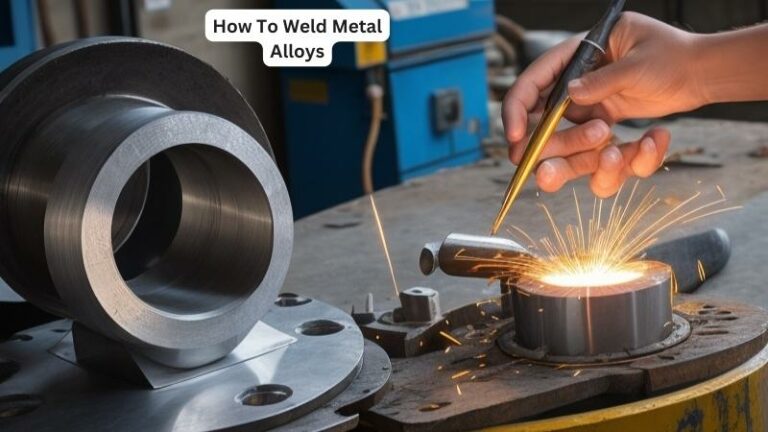How To Weld Metal For Home Improvement
In the realm of DIY home improvement, there are few skills as versatile and valuable as welding. Whether you’re repairing a broken metal railing or constructing a custom-made piece of furniture, knowing how to weld can turn your visions into reality.
However, the art of welding may seem daunting to beginners, with its specialized equipment and technical know-how. Fear not! In this guide, we will demystify the world of welding and provide you with the essential knowledge and techniques to weld metal for your home improvement projects.
Welding is not only a practical skill but also a creative outlet, allowing you to bring your unique ideas to life. Imagine being able to build your own metal sculptures, repair cherished heirlooms, or fabricate one-of-a-kind pieces that perfectly suit your style and needs.
With the right tools and proper guidance, welding becomes an accessible and rewarding craft that can save you money and add a personal touch to your home. So, whether you’re a complete novice or have dabbled in welding before, let’s dive into the world of metal fusion and discover the possibilities that await you in the realm of home improvement.
How to Weld Metal for Home Improvement:
- Prepare the work area by clearing any flammable materials.
- Put on safety gear, including gloves, goggles, and a welding helmet.
- Choose the appropriate welding method for your project, such as MIG, TIG, or arc welding.
- Clean the metal surface to be welded using a wire brush or grinder.
- Set up your welding machine according to the manufacturer’s instructions.
- Position the metal pieces to be welded and secure them in place.
- Strike an arc by touching the electrode or wire to the metal surface.
- Move the electrode or wire along the joint to create a weld bead.
- Continue welding until the joint is complete, ensuring proper penetration.
- Allow the welded metal to cool down before handling it.

How To Weld Metal For Home Improvement:
Gathering the Required Equipment
Before you begin welding, it’s important to gather all the necessary equipment. Here are the key items you will need:
1. Welding Machine: Invest in a quality welding machine that suits your specific needs. There are various types available, such as MIG, TIG, and stick welders. Consider factors like the types and thicknesses of metal you will be working with, as well as your skill level.
2. Welding Helmet: Protect your eyes and face from sparks and harmful UV radiation with a welding helmet. Look for one with an auto-darkening feature for convenience.
3. Welding Gloves: Choose a pair of heat-resistant gloves that provide dexterity and protection. Leather gloves are commonly used for welding.
4. Safety Glasses: In addition to a welding helmet, wear safety glasses to protect your eyes from flying debris and particles.
5. Welding Clamps: Use welding clamps to secure metal pieces in place during the welding process. This will ensure accuracy and prevent movement.
6. Chipping Hammer and Wire Brush: These tools are essential for removing excess slag and cleaning the weld area between passes.
7. Angle Grinder: An angle grinder with a grinding wheel or flap disc can be used to smooth out welds and remove any rough edges.
8. Protective Clothing: Wear long-sleeved, flame-resistant clothing to protect your skin from sparks and heat. Avoid loose-fitting garments that can easily catch fire.
9. Adequate Ventilation: Welding produces harmful fumes, so ensure you have good ventilation in your workspace. Consider working outdoors or in a well-ventilated area to minimize exposure.
10. Fire Extinguisher: Keep a fire extinguisher nearby in case of emergencies. Familiarize yourself with its usage and location before starting any welding project.
Gathering these essential tools and equipment will set you up for a successful welding experience, ensuring safety and efficiency throughout your project.
Preparing the Work Area
Once you have acquired the necessary equipment, it’s time to prepare your work area. Follow these steps:
1. Clear the Space: Remove any flammable materials, clutter, or obstacles from the immediate vicinity. This will minimize the risk of accidents and fires.
2. Set Up a Welding Table: If possible, work on a sturdy welding table. Ensure it is clean, level, and capable of withstanding the heat generated during welding.
3. Secure the Metal Pieces: Use welding clamps to secure the metal pieces you will be welding. This will prevent movement and ensure accurate welds.
4. Check for Proper Grounding: Ensure that your welding machine is properly grounded to avoid electrical hazards. Consult the manufacturer’s instructions for guidance.
5. Protect Surrounding Areas: Cover nearby surfaces, walls, and objects with fire-resistant blankets or welding curtains to prevent sparks from causing damage.
6. Ensure Adequate Lighting: Proper lighting is crucial for accurate welding. Make sure your work area is well-lit, allowing you to clearly see the welding zone.
7. Keep a Fire Extinguisher Nearby: Have a fire extinguisher within reach at all times. It’s better to be prepared for emergencies than to risk a small incident turning into a larger problem.
By following these steps and preparing your work area properly, you will create a safe and efficient environment for your welding projects.

Faqs for Weld Metal For Home Improvement:
Welding is a process of joining two or more pieces of metal together by melting the edges and allowing them to fuse. It is commonly used in various industries, including home improvement projects. The basic principle behind welding is to create a strong and permanent bond between the metal pieces.
In the welding process, a heat source is used to melt the metal edges, and a filler material is often added to create the joint. The heat source can be an electric arc, a flame, or a laser, depending on the type of welding being performed. Once the metal has melted and fused together, it solidifies to form a strong bond.
There are several different types of welding methods commonly used for home improvement projects:
– MIG (Metal Inert Gas) welding: This is a popular method that uses a wire electrode and a shielding gas to protect the weld from atmospheric contamination.
– TIG (Tungsten Inert Gas) welding: This method uses a tungsten electrode and a shielding gas, but does not require a filler material.
– Stick welding: Also known as shielded metal arc welding (SMAW), this method uses a consumable electrode coated in flux to create the weld.
– Flux-cored arc welding (FCAW): This method uses a tubular wire electrode with flux inside, eliminating the need for an external shielding gas.
– Spot welding: This method is commonly used for joining thin metal sheets together by applying pressure and heat to specific spots.
Welding can be a hazardous activity, so it is important to take proper safety precautions when working with metal at home. Here are some essential safety measures to follow:
– Wear protective clothing, including a welding helmet, gloves, and flame-resistant clothing, to protect yourself from sparks, UV radiation, and hot metal.
– Ensure good ventilation in your workspace to prevent the buildup of harmful fumes and gases.
– Use welding screens or curtains to protect others from the welding arc and flying sparks.
– Keep a fire extinguisher nearby and be aware of any flammable materials in your workspace.
– Take breaks to avoid fatigue, as welding requires concentration and precision.
While welding can be a rewarding skill to learn, it is easy to make mistakes, especially as a beginner. Here are some common welding mistakes to avoid:
– Poor preparation: Make sure the metal surfaces are clean and free of rust, paint, or dirt before welding.
– Incorrect welding technique: Practice proper welding techniques, such as maintaining the correct travel speed and electrode angle, to achieve strong and consistent welds.
– Inadequate safety measures: Always wear the appropriate protective gear and follow safety guidelines to avoid accidents or injury.
– Neglecting to check settings and equipment: Ensure that your welding machine is set to the correct settings and that all equipment is in good working condition before starting a project.
– Ignoring proper joint design: Use the appropriate joint design and consider factors like material thickness and joint strength when planning your welding project.
When undertaking welding projects at home, it is important to have the right tools for the job. Here are some recommended welding tools:
– Welding machine: Choose a welding machine that suits your needs and the type of welding you plan to do. MIG, TIG, and stick welders are common options for home use.
– Welding helmet: Invest in a quality welding helmet with a proper auto-darkening feature to protect your eyes from the intense light produced during welding.
– Welding gloves: Get a pair of welding gloves made from heat-resistant material to protect your hands from sparks and heat.
– Welding clamps: These are essential for holding metal pieces in place and ensuring proper alignment during welding.
– Wire brush or grinder: Use these tools to clean the metal surfaces and remove any rust or paint before welding.
– Safety equipment: Apart from the welding helmet and gloves, also consider getting safety glasses, ear protection, and a fire extinguisher for your workspace.

Source: ytimg.com
conclusion:
mastering the art of welding metal for home improvement projects is a valuable skill that can empower homeowners to tackle a wide range of tasks with confidence and creativity. By understanding the fundamentals of welding, such as safety precautions, equipment selection, and proper technique, individuals can transform their living spaces into personalized havens that reflect their unique tastes and needs.
Moreover, the benefits of learning to weld extend beyond the realm of home improvement. This practical skill opens doors to a world of creative possibilities, allowing individuals to explore their artistic side and even launch their own welding-based businesses. With determination and practice, anyone can become proficient in this versatile craft, and the rewards are well worth the effort. So, take the plunge, gather your tools, and embark on an exciting journey of self-discovery and home improvement through the transformative power of welding.



